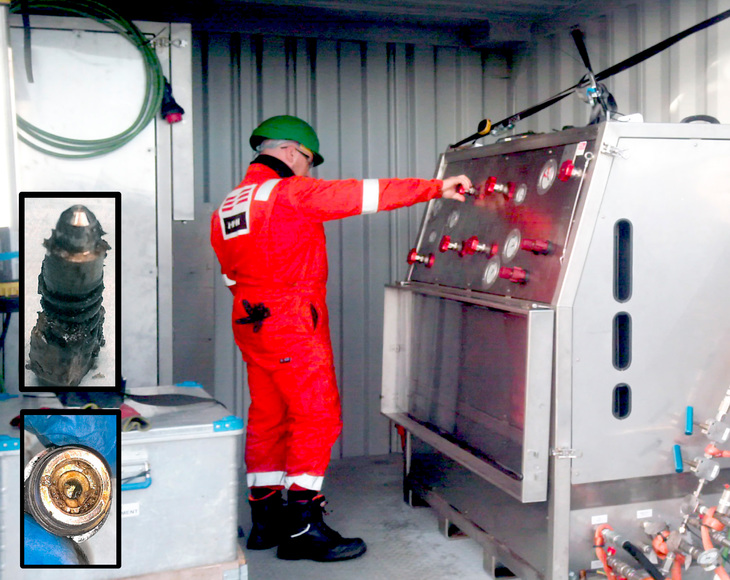Downhole scale inhibition is critical to the operability of high production wells on a major operators' facilities in the UK North Sea.
However, on several wells, the Non-Return Valves (NRV’s) within the Downhole Chemical Injection Valves (DHCIV) at around 10,000ft have failed their inflow testing which then creates a significant well integrity and associated production loss risk which had to be addressed.
Following a previous workover a DHCIV and NRV were inspected and it was identified that due to sand, particles and debris around the sealing surfaces the metal to metal NRV seals were being held off seat causing the failed inflow test. Once the NRV’s were cleaned their metal to metal sealing was returned and a successful inflow test achieved.
The challenge was then to find a solution that could clean these NRV’s of sand and debris approximately 10,000ft down the well.

Liquid CO, turbulent flow
The Solution
In collaboration with the client an IKM Ocean Team engineering study and onshore trials established that supercritical CO2 (SCCO2) with turbulent flow could remove debris from around NRV’s within a DHCIV installed at the end of a coil of 3/8” OD chemical injection line, 12,900ft long.
Using proprietary SCCO2 techniques the applied debris could be flushed using SCCO2 turbulent flow and a significant improvement in succes rate, measured by the client, showed successful inflow test were achieved, therefore suggesting that this could be replicated offshore on these problematic high production wells and their integrity, scale inhibitor injection and associated production re-instated.
Offshore SCCO2 operations were planned with the following key outputs/deliverables:
- Minimum disruption to safe production operations elsewhere on the platform.
- Operational success is defined as the deployment of the SCCO2 flushing solution with no safety related incidents or non-conformities.
- Technical success is defined as zero pressure build up on the scale inhibitor line during the post flushing pressure test when the line is full of a (Triethylene Glycol) TEG water mix, there is zero leak acceptance criteria to restore the integrity of the DHCIVs.
Results/Value Added:
Offshore procedures and risk assessments were established and appropriate SCCO2 ATEX equipment, accessories and IKM Ocean Team Supervisors supported by IKM Technicians mobilised from Aberdeen.
Following 12 hours effective SCCO2 flushing per line, inflow tests were passed, sealing efficiency increased significantly and pressure build-up reduced. Total operation for 4 lines took 10 days including rigging and back-load.
The DHCIV SCCO2 remediation operation performed as planned to achieve all the three key outputs/deliverables with scale inhibitor injectivity and well integrity restored these high producing wells are now back on-line delivering significant value to our client.
“Internal evaluation shows a significant improvement,
certainly enough to want to continue with the SCCO2
cleaning”
Client Team Lead, Product Optimization

DHCIV and NRVs made for test/trial purposes . A set of 2nd generation SCCO2 equipment was used for the trial.